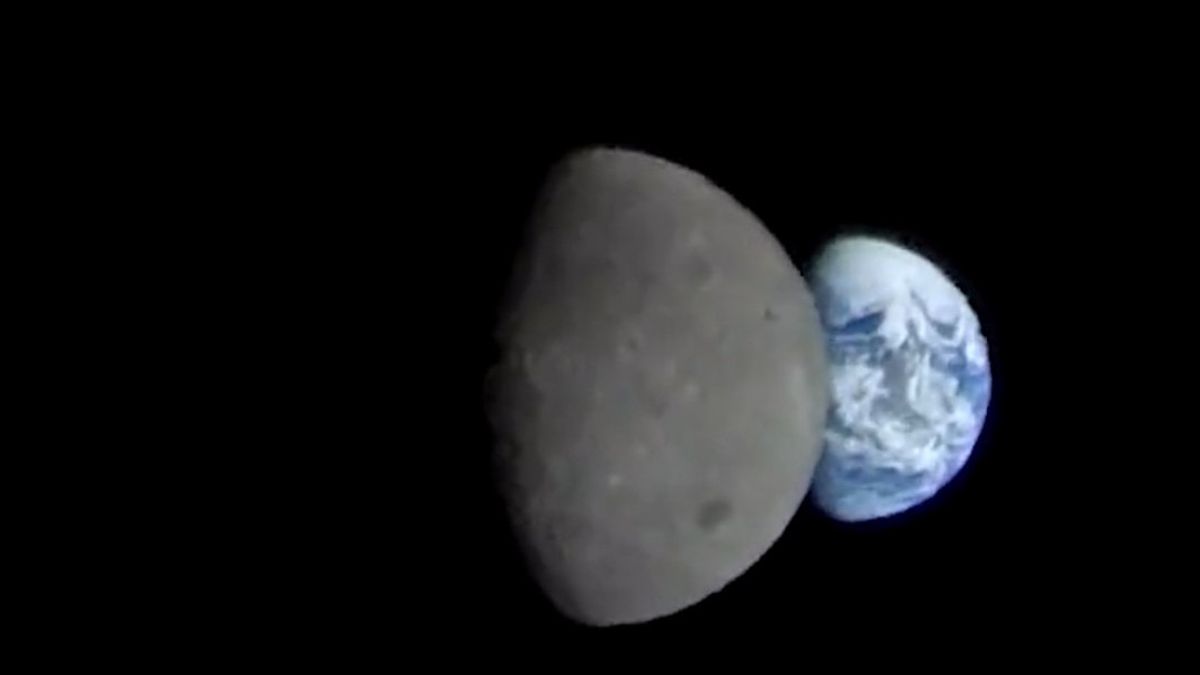JAKARTA - During the Artemis I mission, the Orion spacecraft orbiting the Moon presented a great image from above, and NASA recently re-shared the recording of Orion's journey.
The footage immortalized on November 28 shows Earth appearing behind the Moon. NASA shared the footage on its official Twitter page.
On Nov. 28, our Orion spacecraft captured the Earth rising behind the Moon.The #Artemis I flight test happened around 50 years after the iconic Apollo 17 "Blue Marble" photo of Earth was taken. See the similarities and differences between the two eras: https://t.co/lEllEjjRkv pic.twitter.com/lM1W3BH2mR
— NASA (@NASA) December 24, 2022
"On November 28, our Orion spacecraft captured Earth which rose behind the Moon. The #Artemist I flight test took place about 50 years after the iconic Apollo 17 "Blue Marble" Earth photo was taken," tweeted @NASA.
NASA also explained why this event happened, The small wave because the camera is in a fixed position on the solar array of the spacecraft while the Moon and Earth continue to move in orbit relative to Orion," said @NASA.
"We came all this way to explore the Moon, and the most important thing is that we discovered the Earth" –Bill Anders, Apollo 8 astronaut"Earthrise," one of the most powerful photos in @NASA’s history, was taken by Anders #OTD in 1968 as the Apollo 8 crew orbited the Moon. pic.twitter.com/uqORVUyVZf
— NASA History Office (@NASAhistory) December 24, 2022
NASA added that the recording was played 900 times its original speed. NASA History Office also shared an iconic image of Earthrise that was captured exactly 54 years earlier during the Apollo 8 mission in 1968.
The unmanned Artemis I mission began on November 16 and ended with Orion crashing off the coast of California, USA on December 11.
While in space, Orion comes within just 80 miles of the lunar surface before entering orbit that takes him as far as 268,553 miles from Earth, one point further than any spacecraft has ever done.
The next mission, just a few years from now, will take astronauts to the Moon with Orion on the Artemis II mission.
After that, on a mission that could take place at the earliest in 2025, NASA will use Orion on the Artemis III mission which places the first woman and first person of color on the lunar surface.
Finally, NASA's most ambitious mission is planning to build a base on the Moon, where astronauts can spend a long time exploring the lunar surface.
Launching Digital Trends, Tuesday, December 27, the US space agency also wants to use the Moon as a stepping stone for its first manned mission to Mars in the 2030s.
The English, Chinese, Japanese, Arabic, and French versions are automatically generated by the AI. So there may still be inaccuracies in translating, please always see Indonesian as our main language. (system supported by DigitalSiber.id)













